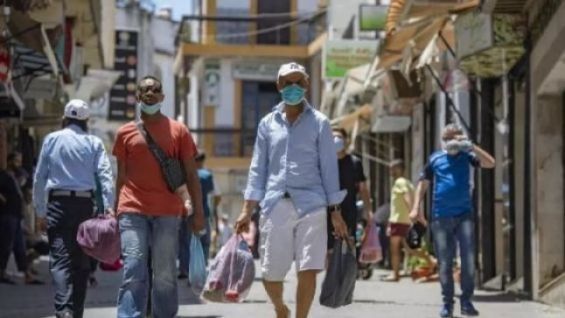Because of the Coronavirus health crisis, the Moroccan economy is expected to experience a deep recession, its first since 1995, the World Bank estimated on Monday. In a report entitled «Trading together: Reviving Middle East and North Africa Regional Integration in the Post-Covid Era», the institution recalled that the consolidation of Moroccan public finances has been interrupted given spending pressures and slowing economic activity.
Thus, «the reduction in remittances, tourism activities and FDI as well as the significant drop in exports have a negative impact on the position of external payments», it estimated, expecting an uncertain yet gradual growth recovery.
In its report, the financial institution recalls that the pandemic hit the Moroccan economy at a time when the country’s economic growth was already low. As the period of disruption and containment was much longer (nearly three months) in the second quarter of 2020, economic output contracted significantly in the second quarter of 2020, falling by 13.8% in the first quarter of 2020.
The World Bank indicates that manufacturing industries output has shrunk significantly by 6% in the first half of 2020, with many sectors shutting down in mid-March and a service sector shrinking considerably by 5% in the first half of 2020. The report also reported the fall in tourism receipts (-33.2%) and remittances from abroad (-8.1%) and the deficit in tax revenue of 8.3%, which widened the budget deficit.
An overall budget deficit of 7.6% of GDP
The World Bank predicts that Morocco's real GDP will contract by 6.3% in 2020, mainly due to the Covid-19 pandemic, but also because of the drought. With the exception of public consumption, all components of aggregate demand are expected to decline considerably.
«In the medium term, the economic recovery will probably be driven by the return to the historical growth rate of agricultural production as the non-agricultural sector slowly.The recovery of the tourism sector may be slower».
The current account deficit is expected to be at 9.9% of GDP in 2020, before decreasing in the medium term, the World Bank reports, adding that «the external shock has led to a sharp decline in imports and exports, tourism receipts and remittances». «Although imports (with the exception of food products) are decreasing, this will not fully offset the decline in exports and tourism receipts», warn the authors of the report.
The same body expects revenues to be «lower than forecast in 2020 and 2021 and spending to increase in 2020 due to additional spending related to COVID response measures». As a result, «the overall budget deficit will widen to reach 7.6% of GDP in 2020» while central government debt is expected to rise to 78.9% of GDP in 2022.
«Extreme poverty (international poverty line of $ 1.90 in PPP) will increase slightly, but will remain below 1%, while poverty measured with a threshold of 3, 2 dollars in PPP will increase by 1 percentage point in 2020 to reach 6.2%», it added.
The institution also predicts that the population's vulnerability to poverty rate will aggravate from 24.4% to 27.5%. But «the planned increase in social spending combined with better targeting can accelerate the pace of poverty reduction», the World Bank hopes.





 chargement...
chargement...












